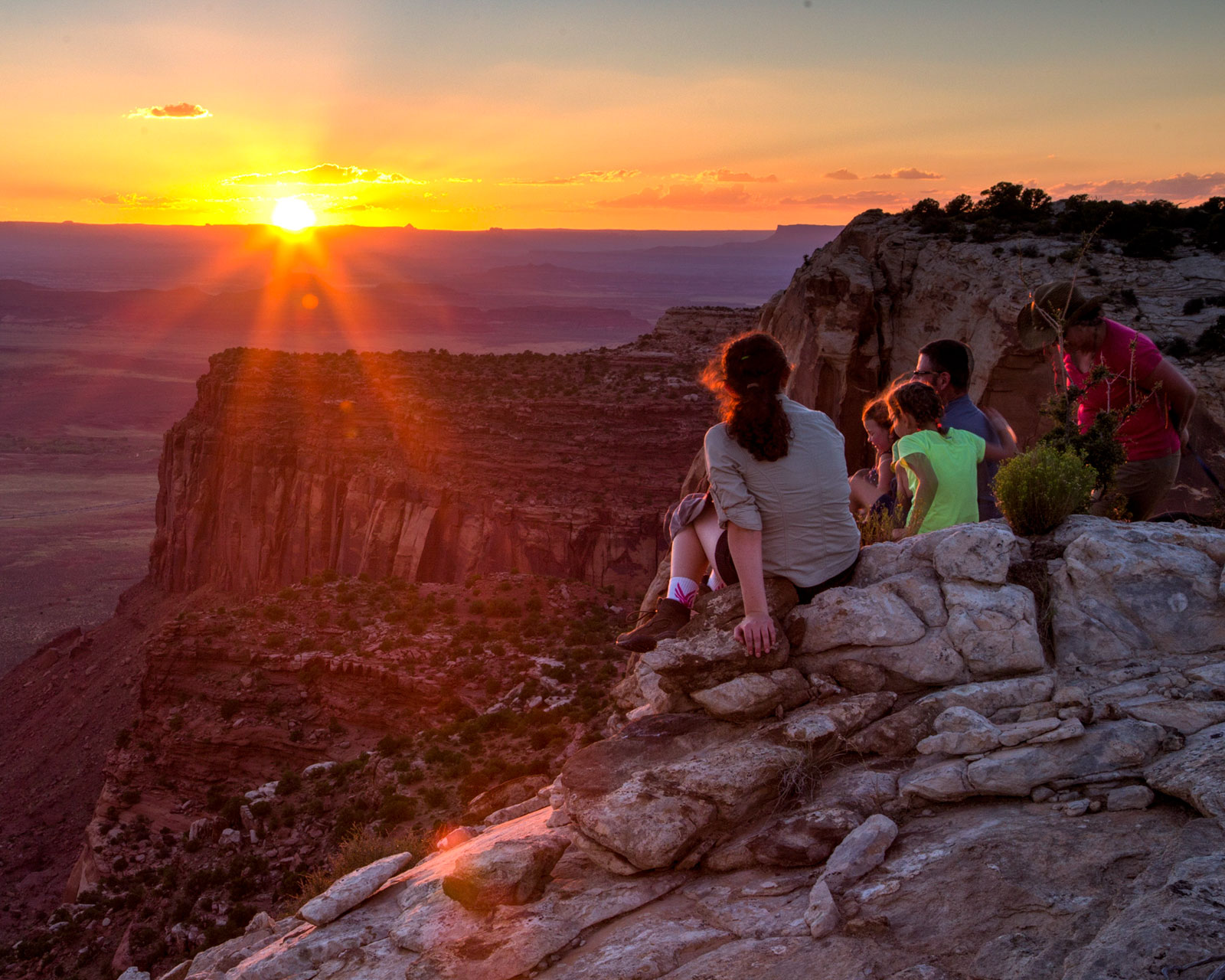The Local newsletter is your free, daily guide to life in Colorado. For locals, by locals.
“There’s actually a saying in Utah,” says Conservation Colorado wilderness and public lands advocate Scott Braden. “‘How do you know it’s springtime in southern Utah? ‘Cause the license plates turn green.’”
As any adventurous Coloradan knows, if the Rockies are our backyard playground, canyon-speckled Utah is the neighborhood park. President Donald Trump’s April 25 announcement that his administration will review every national monument that totals more 100,000 acres and was established after 1996—the year President Bill Clinton controversially designated the Grand Staircase Escalante National Monument, also in Utah—has environmentalists, outdoor enthusiasts, and native tribes on edge.

The order calls on the U.S. Department of the Interior, headed by Secretary Ryan Zinke, to hunt for “abuses” of the century-old Antiquities Act, the law that grants monument-making power to presidents. It calls out Bears Ears National Monument, designated by President Barack Obama in the eleventh hour of his administration (after a lengthy, involved process), to be reviewed at first priority, within no more than 45 days from the order’s signing.
The road trip-worthy Bears Ears landscape has a rich cultural significance. The 1.35 million acres of land is sacred to local Native American tribes, and includes tens of thousands of archaeological sites. It’s also somewhat of a sister to Colorado’s Canyons of the Ancients National Monument (designated by President Clinton in 2000), which sits just 30 miles from Bears Ears and is also under review by the Trump administration.
The Farmington Daily Times reports that, like Bears Ears, some locals weren’t pleased with the monument designation of Canyons of the Ancients, which includes more than 6,000 ancient sites, including cliff dwellings, kivas, and rock art. In the case of Canyons, the focal issue is that the designation staves off future oil and gas development, which some locals favor. While oil and gas interests have also eyed Bears Ears, Braden says the land isn’t terribly rich in oil and gas activity. Instead, some locals value it for cattle grazing land. “It’s kind of a red herring argument because…all those places in the Bears Ears National Monument have a very low probability for oil and gas development. It’s not like it’s a choice between the two things.”
(More: Hike Sand Canyon Trail in Canyons of the Ancients National Monument)
It’s possible that Trump’s scrutiny of monuments will result in nothing but political hot air. Zinke said last week that the order directs him to suggest legislative changes or modifications to the monuments—which doesn’t necessarily mean those changes will take place.
“Questioning national monuments is great politics in rural, western counties,” says University of Colorado Boulder law professor Fred Cheever. “It was great politics in 1943 when Wyoming complained that Franklin Roosevelt had designated Grand Teton National Monument and it’s great politics in southern Utah today. Rallying against national monuments is nothing new. Actually changing them would be pretty new.”
The Antiquities Act, Cheever explains, grants presidents the power to create a national monument, nothing more. The power to adjust boundaries has historically been done by Congress. Undoing a designation of a monument has never been done.
“Congress acting as a legislature, meaning both houses and the president’s signature, has plenary power, all the power you could imagine, over the public lands,” Cheever says. “They took just a little piece of that power and granted it to the president in the Antiquities Act.”
The language of the executive order, Cheever says, suggests a nod to the displeasure of many over Clinton’s Grand Staircase Escalante National Monument, which was created with scant consulting of local Utah government, and to all rural westerners who might prefer agricultural and energy development in their neighborhood, so to speak, over the quiet of conservation (and the tourists that attracts).
Three national monuments in Colorado were created after 1996: Canyons of the Ancients (the only one that meets the explicit size requirement—more than 100,000 acres—spelled out for review in the executive order), Chimney Rock National Monument, and Browns Canyon National Monument.
Update, 5/12/17: The U.S. Department of the Interior has opened a public comment period on the Trump administration’s review of national monuments. Comments relating to Bears Ears National Monument must be submitted before May 26. Comments relating to all other national monuments must be submitted before July 10, 2017. Find more information and submit your comment here.








